American Indian forestry: blending science and tradition
PDF for download
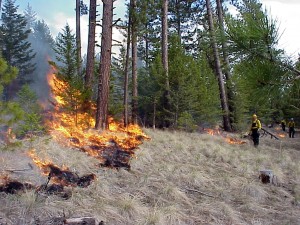
Prescribed fire used by the Tribes for centuries (Flathead Indian Reservation managed by the Confederated Tribes of the Salish and Kootenai Tribes). Photo by IFMAT-III
For thousands of years, American Indians have been managing the forests in which they live.
Today, with trained professionals who are tribal members, their forests are managed with modern tools and methods; include manufacturing facilities and address global forest issues such as climate change, forest certification, carbon sequestration and a changing work force.
Read more…
Genes the means to screen future forest scene
PDF for download
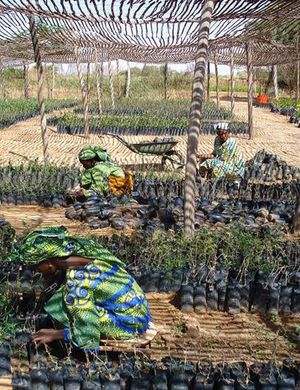
Women caring for tree seedlings in a nursery in Niger. Credit: Bioversity International/L. Snook
Forest ecosystem restoration is a critical component in tackling climate change, combatting biodiversity loss and desertification, and for providing products and services that support livelihoods at a local level.
For those reasons, restoring and rehabilitating forests and degraded lands will be one of the major environmental challenges of this century.
But, as a recent thematic study coordinated by Bioversity International, a IUFRO Member Organization, for the Food and Agriculture Organization of the United Nations – Genetic Considerations in Ecosystem Restoration Using Native Tree Species – notes, there is more to forest restoration than simply planting trees.
Read more…
To manage forests sustainably – think synergy
PDF for download
 A comprehensive study of the conditions that assist sustainable forest development will be published at the upcoming IUFRO World Congress this fall in Salt Lake City, USA.
A comprehensive study of the conditions that assist sustainable forest development will be published at the upcoming IUFRO World Congress this fall in Salt Lake City, USA.
The title of the publication, produced by the IUFRO Special Project on World Forests, Society and Environment (IUFRO-WFSE), is Forests Under Pressure – Local Responses to Global Issues.
Read more…
Mixed species growth predictions made easy – well, easier
PDF for download

Measuring transpiration by collecting sap flow data from a Eucalyptus globulus tree that is growing in a mixed species plantation with Acacia mearnsii. This will be used to understand the processes driving species interactions in these mixtures. (Photo by David Forrester; Cann River, Australia)
A recent study indicates why it is difficult to predict how mixed-species forests or plantations will grow, but makes those predictions easier by discussing the processes that drive changes over space and time in species interactions.
Since tree species mixtures are regarded as one of the most important approaches to reduce the risks to forests posed by global change, the study’s conclusions will be of interest to forest managers or policy makers using mixed-species forests or plantations.
Entitled The spatial and temporal dynamics of species interactions in mixed-species: From pattern to process, the study is by Dr. David Forrester, Chair of Silviculture, Faculty of Environment and Natural Resources, Freiburg University.
Read more…
Got a question? Biomass may be the answer
PDF for download
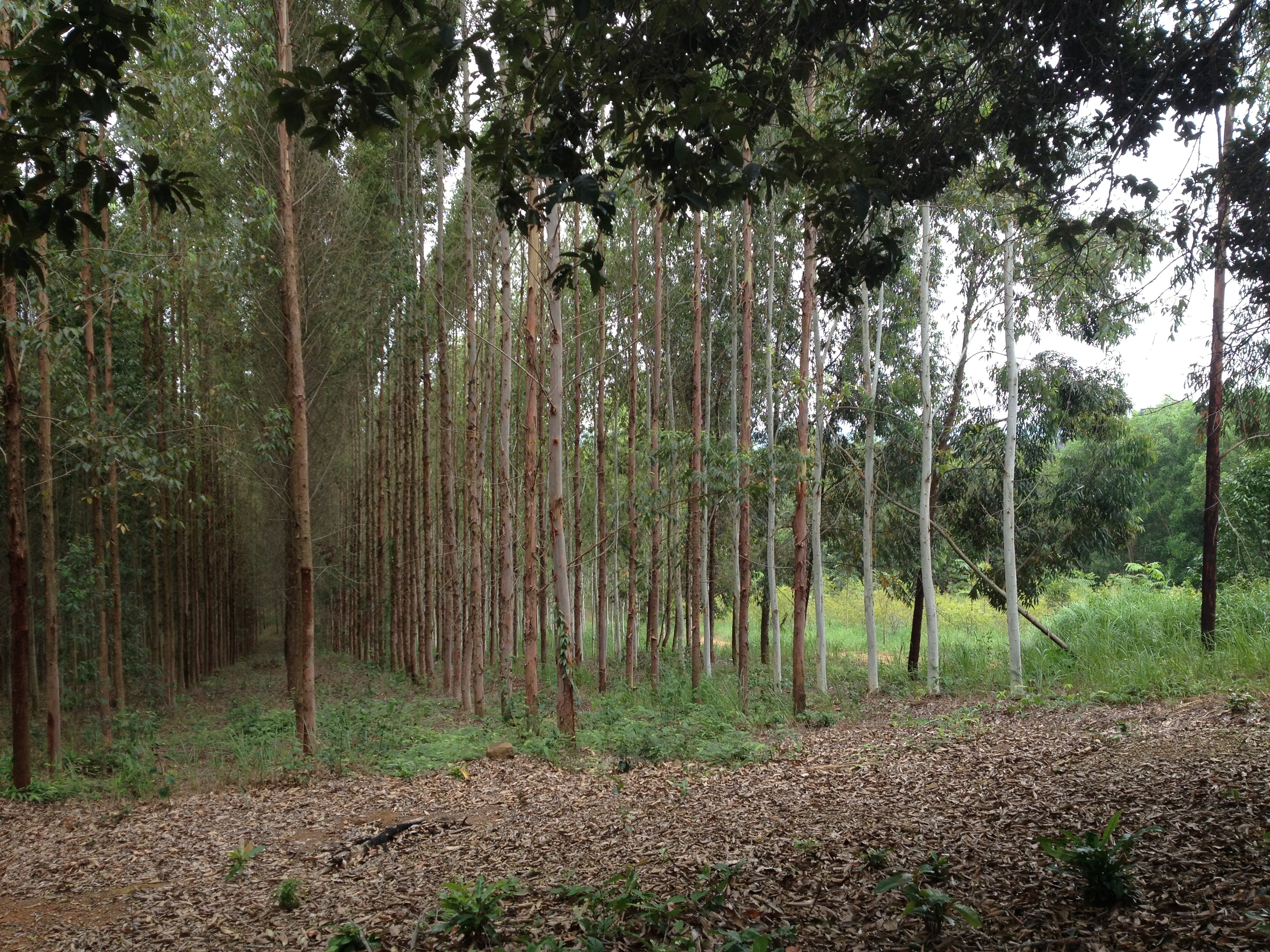
By selecting proper species and breeding experiments as well as genetic modifications as done here in Thailand, fast growing species plantations are capable of producing enormous amounts of biomass within short periods of time. The challenge is, however, to sustain soil fertility, biodiversity and other ecosystem services such as clean water. (Photo by Viktor Bruckman)
It’s just possible that sustainable biomass could be, if not a panacea for the world’s energy challenges, then perhaps the next best thing.
And not only the energy sector would benefit. The reasons for the sustainable use of biomass are many and good, says Dr Viktor Bruckman of the Commission for Interdisciplinary Ecological Studies at the Austrian Academy of Sciences.
In addition to the energy aspect, he adds that biomass offers a range of possibilities as a valuable feedstock for industrial processes. Chemical compounds in biomass can be separated and rearranged to produce everything from composites for use in the automobile industry, to fibres to pesticide ingredients, among others.
Read more…
Eucalyptus genome successfully sequenced
PDF for download

Professor Zander Myburg of the University of Pretoria, South Africa, in front of Eucalypt trees. Photo by Photowise.
With a result that offers major potential for the forest industry, an international team of researchers has successfully sequenced and analyzed the genome of Eucalyptus grandis.
“Now that we understand which genes determine specific characteristics in these trees, we will be able to breed trees that grow faster, have higher quality wood and use water and land more efficiently,” said the lead investigator on the project, Prof. Zander Myburg of the University of Pretoria, South Africa.
Read more…
Green cities: The benefits of the urban forest
PDF for download
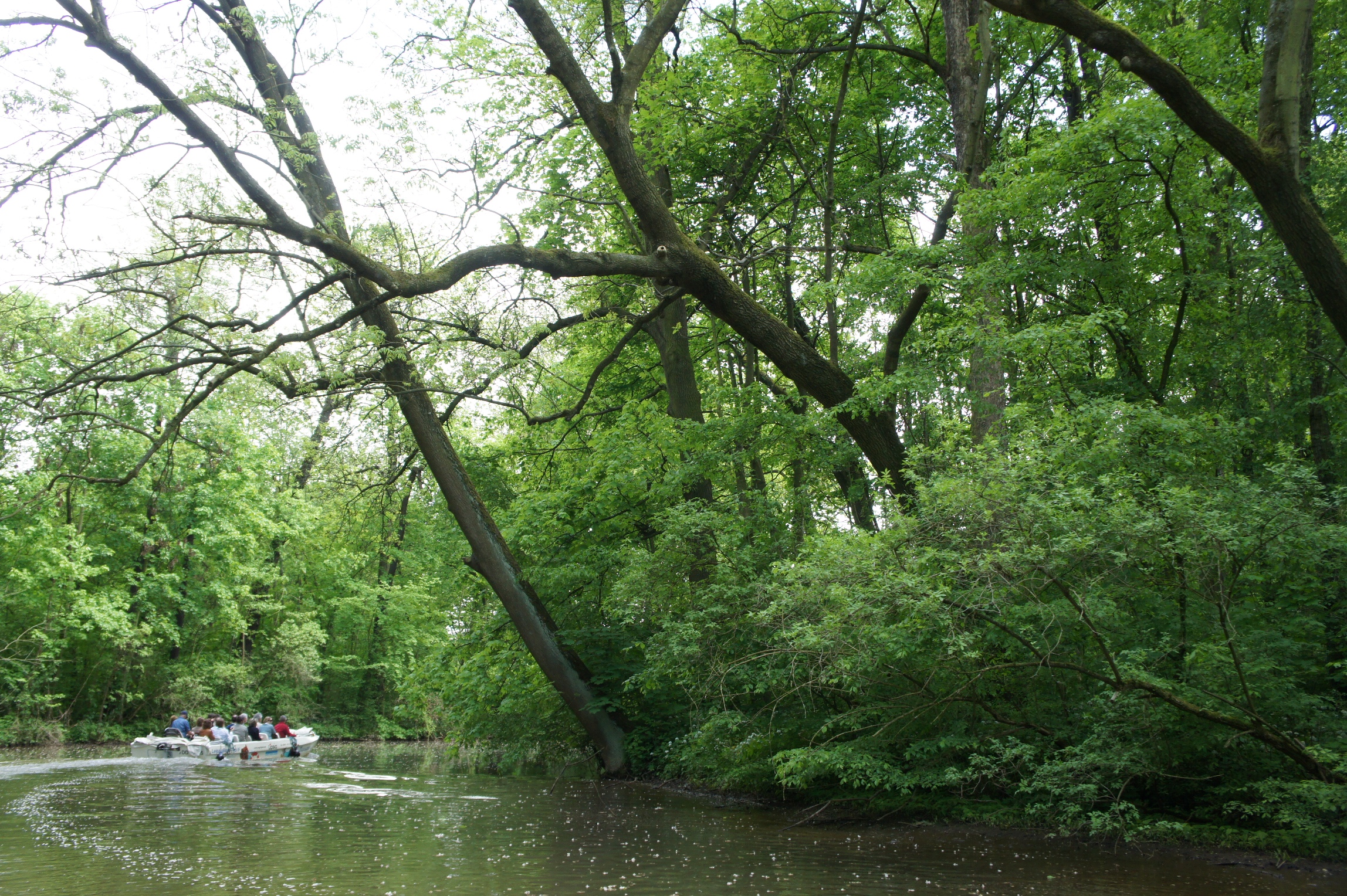
Experiencing the floodplain forests of the city of Leipzig, Germany, from the river (photo by Matilda Annerstedt)
The urban forest means different things to different people.
Many of us see only visually pleasing tree-lined streets, or enjoy the coolness afforded by shade trees on hot days.
Those more closely involved with the urban forest see that – and much, much more.
They also see the urban forest in terms of the ecosystem services and values derived from it – reduced energy use of buildings, improved air quality, stream flows, water quality, urban wildlife, human health, climate change (in terms of both mitigation and species composition) and other benefits that are environmental, social and economic.
Read more…
The forest pharmacy and food store
PDF for download

Forest berries (Petr Kratochvil)
Sometimes, they say, you can’t see the forest for the trees.
And one group of sub-plenary session organizers for the upcoming IUFRO World Congress in Salt Lake City might amend that to read: “Sometimes you can’t see the forest for anything but the timber value in the trees.”
The organizers – Hannu Raitio and Tuija Sievänen of the Finnish Forest Research Institute; James Chamberlain of the U.S. Forest Service; and Carsten Smith-Hall of Denmark’s University of Copenhagen, will present a session entitled: The value and challenges of integrating food and medicinal forest products into forest management.
Read more…
The climate’s changing: So should forest management
PDF for download
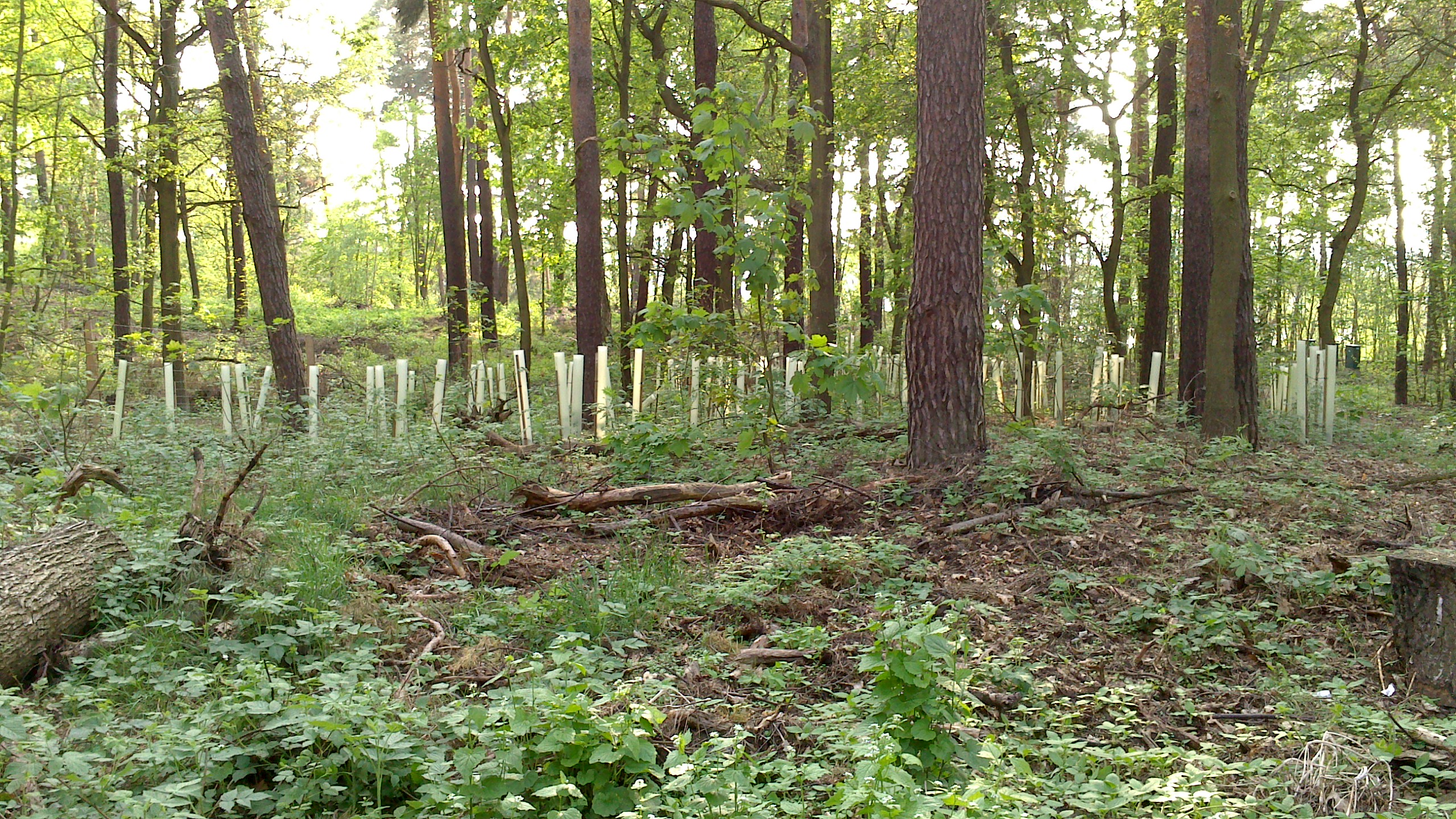
In Berlin, the capital city of Germany, a comprehensive program of converting pine stands into close-to-nature mixed forest is being implemented, thus making the forest more resilient to future climate change effects, for example. (Photo by IUFRO)
As a joke, people used to say: “If you don’t like the weather, just wait a minute. It’ll change.”
Now they say that about the climate – but they’re a lot more serious.
The rapidly changing climate will precipitate related changes throughout nature. And that includes the world’s forests.
Anticipating climate change impacts on forests and adapting policies and management strategies to mitigate those impacts is critical to maintain the health of those forests and, by extension, of the earth.
“Forest management for adaptation to climate change” is the theme of a session being presented at the 24th IUFRO World Congress in Salt Lake City this fall, by Drs. Rodney Keenan of the University of Melbourne, Australia; Carina Keskitalo of Umeå University, Sweden; Kalame Fobissie of the World Wildlife Fund Central Africa, Cameroon; and Guangyu Wang of the University of British Columbia, Canada.
Read more…
‘Citizen science’: A way to fight invasive species?
PDF for download
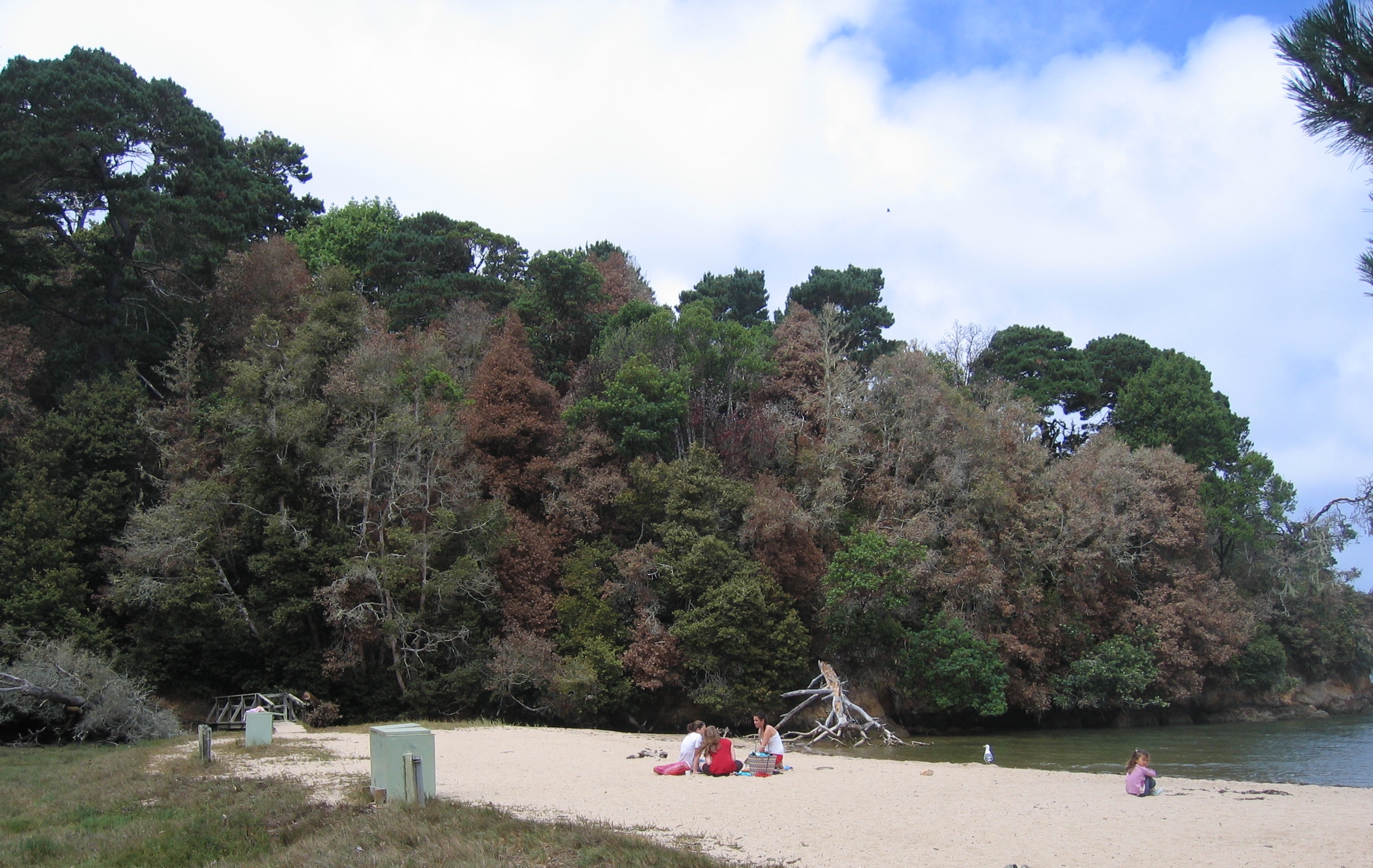
At Shelley Beach, a few miles North of San Francisco, tanoaks and oaks, the most sacred trees to native people of the Northern California coast, have been decimated due to the exotic disease known as Sudden Oak Death (SOD). SOD is thus not only changing the landscape dynamics but also profoundly altering the local culture. (Photo by Matteo Garbelotto)
Invasive species are a threat to forest ecosystems around the world.
No surprise there.
Thousands of invasive flora and fauna have been transported – sometimes by accident, sometimes by design – to different continents and countries. Very often their impact is detrimental to their new region.
But, usually when one thinks of the negative impacts of invasive species, top of mind would be the effect on the economy – for instance, phytophthora dieback, an Asian import, affects the economically important jarrah tree in Australia. Or perhaps one would think of environmental damage, such as the destructive swath cut through the forests of Tierra del Fuego by imported North American beaver, to give just two illustrations of unwanted economic/environmental results.
Read more…










